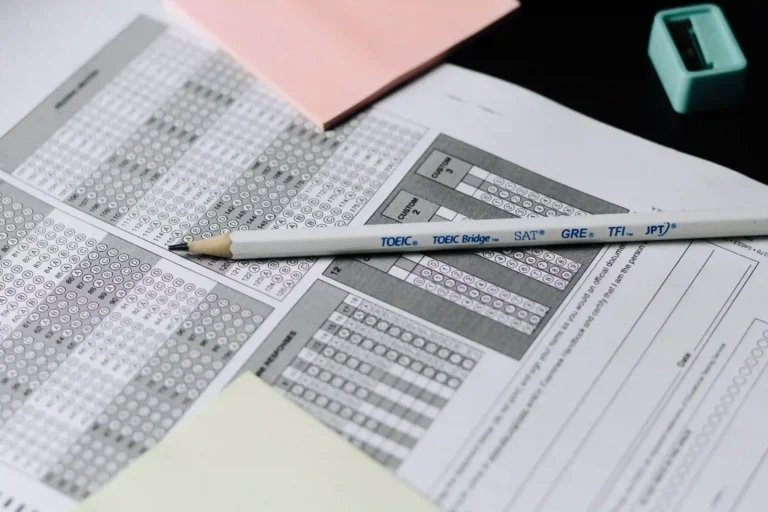The time right after Class 12 feels like standing at a crossroads. You have so many exciting options, and figuring out which direction to go in is a huge and important decision.
If the world of business, finance, and marketing calls out to you, a management degree is a fantastic first step.
A Bachelor of Business Administration (BBA) or a Bachelor of Management Studies (BMS) is more than just a degree. It is a launchpad that prepares you for the dynamic world of commerce.
But before you step into the world of B-schools and boardrooms, there’s one important step: clearing the right entrance exam.
Navigating the world of entrance exams can feel like a huge challenge. Don’t worry, though; we’re here to help you out. In this article, we’ll walk you through some important management entrance exams that could shape your career.
1. Common University Entrance Test
CUET, or Common University Entrance Test (CUET), is a massive, nationwide test that has changed the game for college admissions.
The National Testing Agency (NTA) runs it. Its main goal is to give every student a fair and equal chance. You can apply to tons of universities, including Delhi University (DU), Banaras Hindu University (BHU), and Jamia Millia Islamia, with this one exam.
The exam is a computer-based test available in 13 different languages. It has three parts. Section I tests your language skills. Section II covers domain subjects like Business Studies and Economics. Section III is a General Test, which checks your general knowledge, reasoning, and basic math skills.
The key to success is not just a high CUET score. But it’s choosing the right combination of subjects for the exam that will open the right doors.
This choice often depends on the subjects studied in Class 12. To enter the highly sought-after BBA (Financial Investment Analysis) program at Delhi University, for instance, you must take the mandatory CUET combination. This includes language, mathematics, and the General Test.
For DU’s Bachelor of Management Studies (BMS), one required combination is a language, mathematics or applied mathematics, and two other domain subjects. This means your eligibility for these top-tier programs is often decided by subject choices made in Class 11.
2. National Test for Programs After Twelfth
Dreaming of studying at a Narsee Monjee Institute of Management Studies (NMIMS) campus? The National Test for Programs After Twelfth (NPAT) is your ticket.
It’s the official test for its undergraduate courses, including the popular BBA program. This test is a 100-minute online test with 120 questions. You’ll be tested on your quantitative, logical, and verbal skills.
The questions are split into three sections: Quantitative Reasoning, Logical Reasoning, and Verbal Reasoning. Each section contains 40 questions, making it a total of 120 questions to be answered in 100 minutes. To do great in this format, you’ll want to be quick on your feet and keep a close eye on the clock.
One of the best parts about the NPAT is its scoring system. You receive one mark for every correct answer, and there is absolutely no negative marking for incorrect answers. This encourages students to attempt every single question without the fear of losing marks.
Even better? You can take one main attempt and two retakes. The best score from the three attempts is considered for the final merit list, which significantly reduces exam-day pressure.
To be eligible, you must be under 25 years old. You must have also passed Class 12 with a minimum aggregate of 50% to 60%, depending on the specific program.
3. Jindal Scholastic Aptitude Test
O.P. Jindal Global University is known for its world-class education. For undergraduate programs like BBA, the Jindal Scholastic Aptitude Test (JSAT) is its entrance exam.
Unlike any other graduate management admission test, this test is designed for accessibility and flexibility. It is an online, home-proctored test administered by PearsonVUE. So, you can take the exam from the comfort of your home.
The test has 120 multiple-choice questions to be solved in 120 minutes. So, you get about one minute per question. The test is divided into three equal sections: English Verbal Ability, Logical Reasoning, and Quantitative Skills, with 40 questions in each.
Like the NPAT management aptitude test, there is no negative marking. You can also retake the exam, although there is a fee for each attempt.
JGU believes in a holistic approach, however. Your JSAT score is just one piece of the puzzle. The university also looks at your application, Class 10 and 12 marks. It also conducts a personal interview to assess your communication skills, confidence, curiosity, and ability for nuanced thinking.
Note that JGU offers great flexibility. If you have a high score on the SAT, ACT, or CUET, you might not have to take the JSAT at all.
4. Integrated Program in Management Aptitude Test
IPMAT, or Integrated Program in Management Aptitude Test, is the high-stakes gateway to the prestigious five-year Integrated Program in Management (BBA+MBA) at the Indian Institutes of Management (IIMs).
The biggest perk of this test is that it gives you a direct ticket into an IIM’s MBA program. This is why it’s ideal for students who are sure about a career in management and want a direct path to an IIM MBA.
Different IIMs conduct their own versions of the test. But the two main versions of these management entrance exams are IPMAT Indore and IPMAT Rohtak.
The former is known for its higher difficulty level, particularly in the quantitative section. It consists of two sections: Quantitative Ability and Verbal Ability. Notably, it does not have a Logical Reasoning section.
The marking scheme is +4 for a correct answer and -1 for an incorrect one. But the short-answer questions in the quant section have no negative marking.
IPMAT Rohtak, on the other hand, is easier to moderate than its Indore counterpart. It has three sections: Quantitative Ability, Logical Reasoning, and Verbal Ability. The marking scheme is a straightforward +4 for correct and -1 for incorrect answers across all sections.
Aside from IIM Indore and IIM Rohtak, many other top institutes like IIM Ranchi and IIFT also accept IPMAT scores.
5. Ashoka Aptitude Assessment
Ashoka University is famous for its liberal arts education, and its entrance test is just as unique.
The university says that the Ashoka Aptitude Assessment (AAA) requires minimal preparation.
This test is not about what you know, but how you think. It’s a mandatory 90-minute test for all applicants. It has 40 multiple-choice questions on problem-solving and critical thinking skills, designed by Cambridge. Like NPAT and JSAT, you won’t get negative marks in the MCQ section.
Immediately following the MCQs, you must write a mandatory on-the-spot essay. You get 30 minutes to showcase your writing skills, clarity of thought, and creativity.
The AAA is mandatory only if you do not submit scores from other standardised tests like the SAT, ACT, or CUET. This policy provides flexibility, allowing you to choose the assessment that best showcases your abilities.
While your AAA score is important, Ashoka looks at your entire application—your grades, essays, extracurriculars, and a personal interview. So, you need to do more than just study for a test. You need to build a strong profile with good essays and extracurricular activities.
6. FLAME Entrance Aptitude Test
FLAME University in Pune is another top private university with its own exam, the FEAT.
This is an online exam lasting 120 minutes and containing 100 multiple-choice questions. The test is divided into four sections: Verbal Ability, Reasoning Ability, Quantitative Ability, and General Knowledge.
Similar to some other modern management entrance exams, FEAT has no negative marking. FLAME also accepts scores from SAT and ACT exams.
The university follows a sliding principle for admissions. This means a slightly lower test score can be balanced by a strong performance in other areas. It looks at your test score, an essay, a personal interview, your academic record, your statement of purpose (SOP), and your extracurriculars.
If you’re a well-rounded person with interesting hobbies and achievements, this is a great place to showcase them.
Positioning Yourself for Success in Management Exams
Choosing the right exam is your first big step. Whether you aim for a central university through CUET or a direct IIM seat through IPMAT, there is a path for you. Research well and prepare smartly, so you can walk into that exam hall with confidence.
Wondering how to start preparing or need help staying on track? Prep7Edu has your back. We offer structured courses, practice tests, and expert guidance tailored to each of these management entrance exams. From CUET to NPAT, IPMAT to JSAT, Prep7Edu makes the prep journey less stressful and more focused.
Ready to take the first step toward your dream college? Book a free strategy session with us today!















